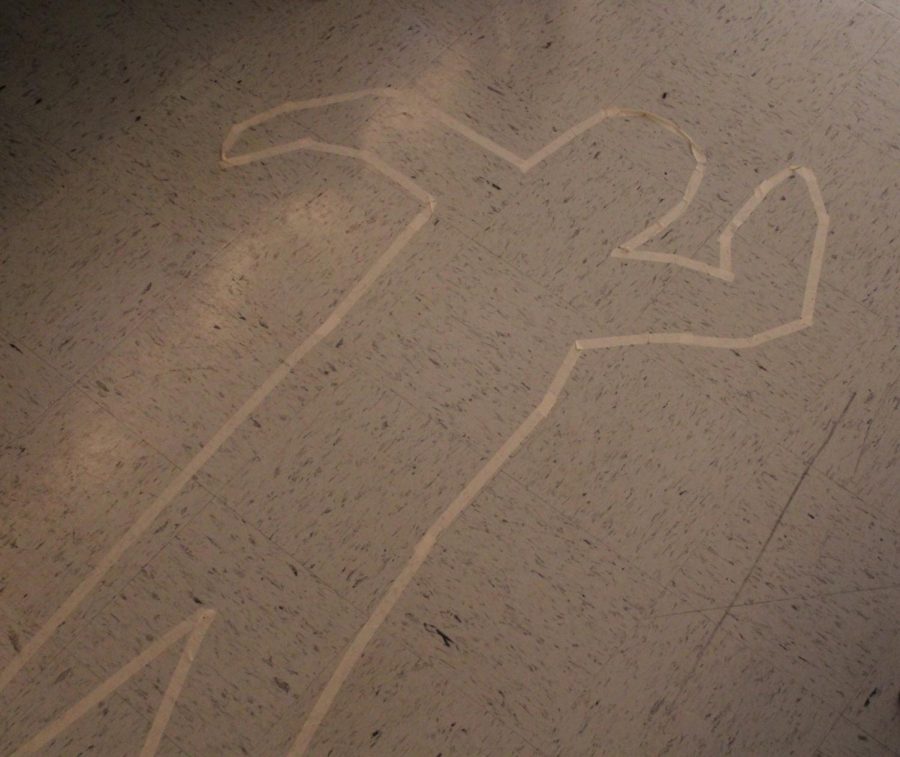Behind the yellow tape: The crime show craze
Crime show fanatics will spend hours gawking at their screens watching NCIS. However, a number of aspects within the show differ from the real life agency, and fans fail to recognize the differences while watching and instead embrace the easily-solved one our docudramas.
January 30, 2019
As avid fans of crime shows can attest, these shows suck viewers in with cliffhangers, suspense, and thrill. However, most viewers fail to realize that actors portray a minuscule amount of similarity with that of real-life crime fighters. Shows such as NCIS, Blue Bloods, and Law and Order give crime show junkies a thrill by glamorizing the aspects that fans assume real agents and officers perform. In order to make these shows keep their high ratings, Hollywood must up the ante when it comes to the drama within these shows. Because no one wants to sit down and watch a television show about agents who do paperwork all day, writers try to keep viewers interested leading to the overdramatized scripts and acting.
NCIS, a criminal investigation show, aired in 2003 and continually keeps high ratings among its avid fans. As a portrayal of the real Naval Criminal Investigative Service, each episode follows actor Mark Harmon (Leroy Jethro Gibbs) and his team as they solve the murders of Navy officials. Newcomers to the show could easily assume that the agency only solves homicide cases; however, NCIS serves as the primary law enforcement agency for the United States Navy by covering all areas including, but not limited to: counterintelligence, cyberterrorism, biometrics, and a number of other areas. As much as homicide investigations stay relevant to the agency, writers exaggerate the number of cases reported. Naval soldiers do not die as often as the show likes to make it appear.
The popularity of the show never ceases to die down due to the writers’ excellent plotlines; however, it does not cover all duties of real NCIS agents. Not all agents solve homicide cases. While CBS’s NCIS will likely remain popular, writers may need to consider adding in aspects of other departments to cover all the work that the real agency performs.
As a more in-depth interpretation of local police enforcement, CBS’s Blue Bloods captures the everyday work of New York City police officers and investigators. The show follows Donnie Whalberg (Detective Daniel “Danny” Fitzgerald Reagan) and his family of detectives as they solve crimes in the New York metro area. In comparison to the real NYPD, where officers and investigators receive cases at random, cases on the show always end up in the lap of Detective Danny Reagan. Unlike reality, Danny happens to arrive at work at the perfect time to take up a case, completely bypassing his son Jamie, a rookie cop, who could work the case himself.
Unlike NCIS, Blue Bloods surprisingly resembles real life with on-location filming in New York City, while the former films in southern California on Hollywood sets and various locations. Although this does not necessarily take away from either show, it creates a more realistic atmosphere for fans of Blue Bloods.
Overall, it becomes difficult for directors and producers to recreate a United States government agency, rather than a state police department, but both include aspects that rarely, or never, occur in reality. Both programs could bare to do a better job at including more agents or officers in their storylines. The real NCIS agency employs over 2500 people, while the NYPD comes in at a staggering 55,304. Out of those thousands of people, both shows only follow between eight to ten people that relatively do the same work. Variety in character roles could only make the broadcasts better.
Over the history of crime shows, Hollywood has done its best at trying to create a more realistic and convincing interpretation of real-life crime fighters. A handful of modern crime series successfully nixed the cheesy detective acts and started to actually resemble government agents and police officers. However, Hollywood welcomes improvements and suggestions, and crime shows could bare to make adjustments.







